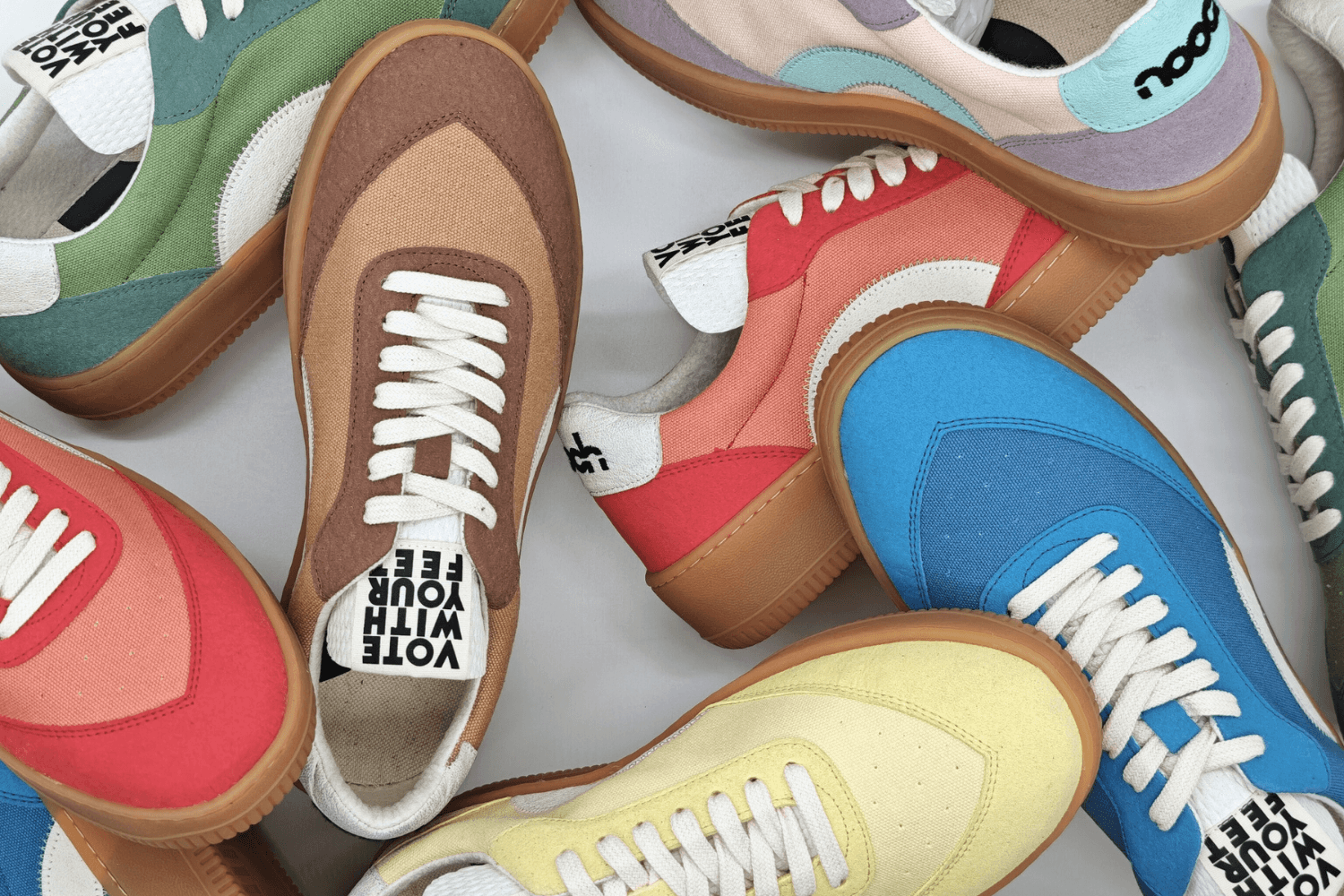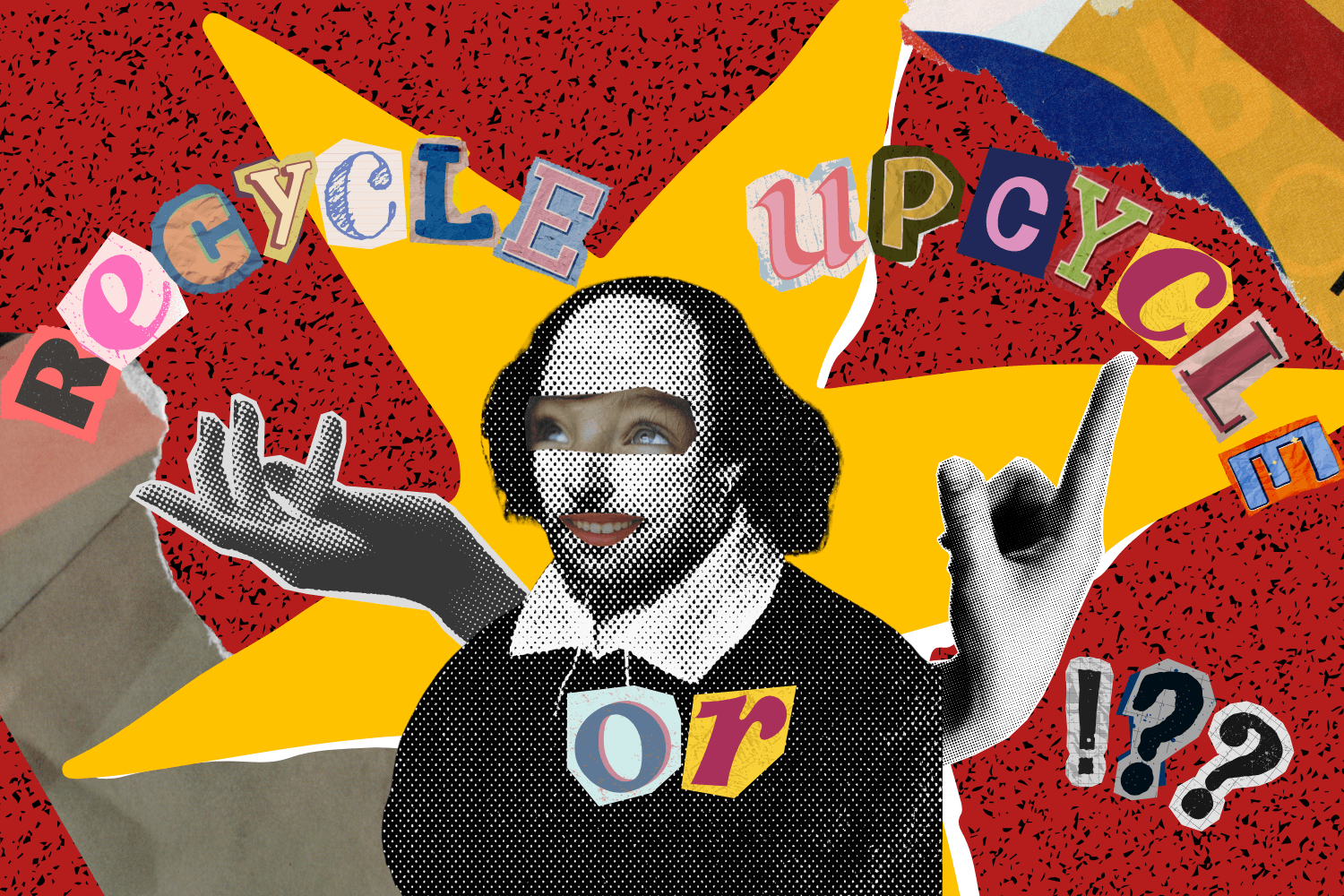PUMA and textile recycling company RE&UP team up on a multiyear partnership to reduce and recycle textile waste, paving the way for recycled fibers in the industry.
PUMA History in Sustainability
PUMA has set itself targets in the fields of sustainability, circularity, human rights, and climate action, all in an effort to achieve their goals for a net zero carbon company in 2030.
In 2023, 80% of PUMA products featured recycled or certified materials, such as recycled polyester, helping reach their carbon reduction targets.
PUMA was named among the most "Sustainable Companies in the World" by TIME Magazine back in July 2024, gaining recognition for the brand's strategy FOREVER.BETTER. PUMA scored 73.02 out of 100 points in the Apparel, Footwear, and Sporting Goods Category. The sportswear giant is showing no signs of slowing down progress toward a carbon zero target with their new collaboration with RE&UP.
 Image source PUMA
Image source PUMA
PUMA is advancing sustainability by integrating renewable energy, low-carbon logistics, and eco-friendly materials across its operations. The company powers core suppliers with renewable electricity, uses low-carbon shipping, and invests in electric vehicles.
What is RE&UP?
RE&UP is a circular company that aims to recycle textiles into new fibers through technology and innovation. Formerly known as SANKO for decades, the company holds +330 patents in technology and recycling systems powered by renewable energy.
 Image source Pexels, Leonid Danilov
Image source Pexels, Leonid Danilov
In 2023 there were 100 million tons of textile waste produced, of which only 1% was recycled, and the rest was sent to landfill or incinerated, this is exactly why RE&UP is an engineering technology that can recycle fibers in mass quantities for reuse.
 Image source RE&UP
Image source RE&UP
RE&UP has the capacity to recycle 44 million tons by 2030, making the company a pioneer scalable in textile recycling solutions. RE&UP operations facility is located in Turkey and is responsible for repurposing 200Kt of discarded textile materials into renewed Next-fibers.
RE&UP Recycling Process
Headquartered in the Netherlands, RE&UP uses forward-thinking, thermomechanical technology to recycle cotton, polyester, and polycotton fibers helping manage the pre and post-consumer waste produced in the apparel industry.
 Image source RE&UP
Image source RE&UP
RE&UP process starts by collecting textile waste and sorting these into fibers, even polyblend materials are separated by thermomechanical processes that will turn them into Next-Gen Cotton and Next-Gen Polyester. The waste-separated waste is then made into pellets ready to be spun into new textiles for the industry.
RE&UP Collaborates with PUMA
RE&UP and PUMA have signed a multi-year collaboration agreement to scale circular principles in the company's operations in America.
 Image source PUMA
Image source PUMA
PUMA's Chief Commercial Officer explains "We are proud to elevate our collaboration with PUMA to the next level, building on our existing work through Puma’s Re: Fibre program" solidifying the company's position in sustainability by 2030.
Alongside partners Circ, Circulose, and Syre, RE&UP is establishing a textile-to-textile (T2T) recycling alliance in hopes of closing the loop in fashion and apparel.
 Image source WEAR x PUMA: Put it to the test
Image source WEAR x PUMA: Put it to the test
PUMA has already been transitioning to more sustainable materials starting with PUMA RE: SUEDE (Read the full article here) compostable sneaker. The company’s RE: FIBRE initiative aims to repurpose faulty goods, post-consumer waste, and factory waste to create new polyester fibers, reducing reliance on plastic bottles. While plastic bottles are commonly used in the textile industry to produce pellets, recycling and processing them are often considered more damaging than a legitimate solution to textile waste.
 Image source PUMA
Image source PUMA
RE: FIBRE garments are made with 95% recycled polyester and can be recycled multiple times without losing quality and structure. As of the start of the 24/25 season, all football replica jerseys (featuring 35 Clubs)* including those for the Euro and Copa América are made from RE: FIBRE.
Why Recycle Textiles?
 Image source RE&UP
Image source RE&UP
The textile recycling industry is still in its early years, however, the future looks bright and full of possibilities on different levels. The new recycling industry sector opens opportunities in the following areas:
Waste Reduction: Globally, 92 million tonnes of textile waste are produced each year. Recycling helps divert these materials from landfills, minimising environmental pollution.
Resource Conservation: Recycling textiles conserves resources by extending the lifespan of materials, thereby reducing the demand for new resources such as water, energy, and raw materials
Reducing Carbon Footprint: Recycling textiles helps cut down greenhouse emissions (carbon dioxide emissions) by decreasing the need for new production and reducing waste decomposition in landfills
Job Creation: The recycling industry can stimulate economic growth by creating jobs in the collection, processing, and manufacturing of recycled materials.

As innovation and technology continue to drive sustainability, RE&UP and PUMA are setting a new industry standard with their T2T partnership, aiming to divert tons of textile waste from landfills. By repurposing existing materials, we lessen our dependence on fossil fuels for material production. Recycling not only reduces CO2 emissions but also maximises resource efficiency, significantly minimising waste and promoting a more circular and sustainable future.
In our reflawn news section, you’ll find more insightful articles about PUMA and their commitment to sustainability, the community and the planet.
What is RE&UP?
RE&UP (formerly known as SANKO) is an innovative circular company specialising in large-scale textile recycling. You can read more on that in the reflawn news section.
How is PUMA reducing its environmental impact?
PUMA integrates renewable energy, low-carbon shipping, and sustainable materials across its operations and their RE:FIBRE collections.
What is the RE&UP x PUMA partnership?
PUMA and RE&UP have signed a multi-year collaboration to integrate large-scale textile recycling into PUMA’s supply chain.
Why is recycling textiles important?
Recycling textiles helps reduce waste, green house gas emissions, preserves resources and alos creates new jobs in recycling industry.







